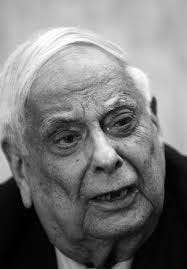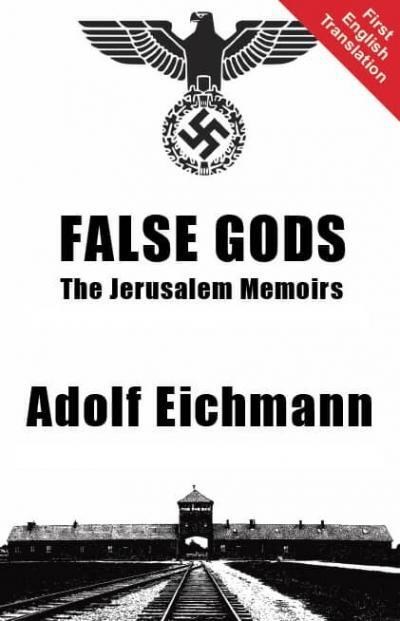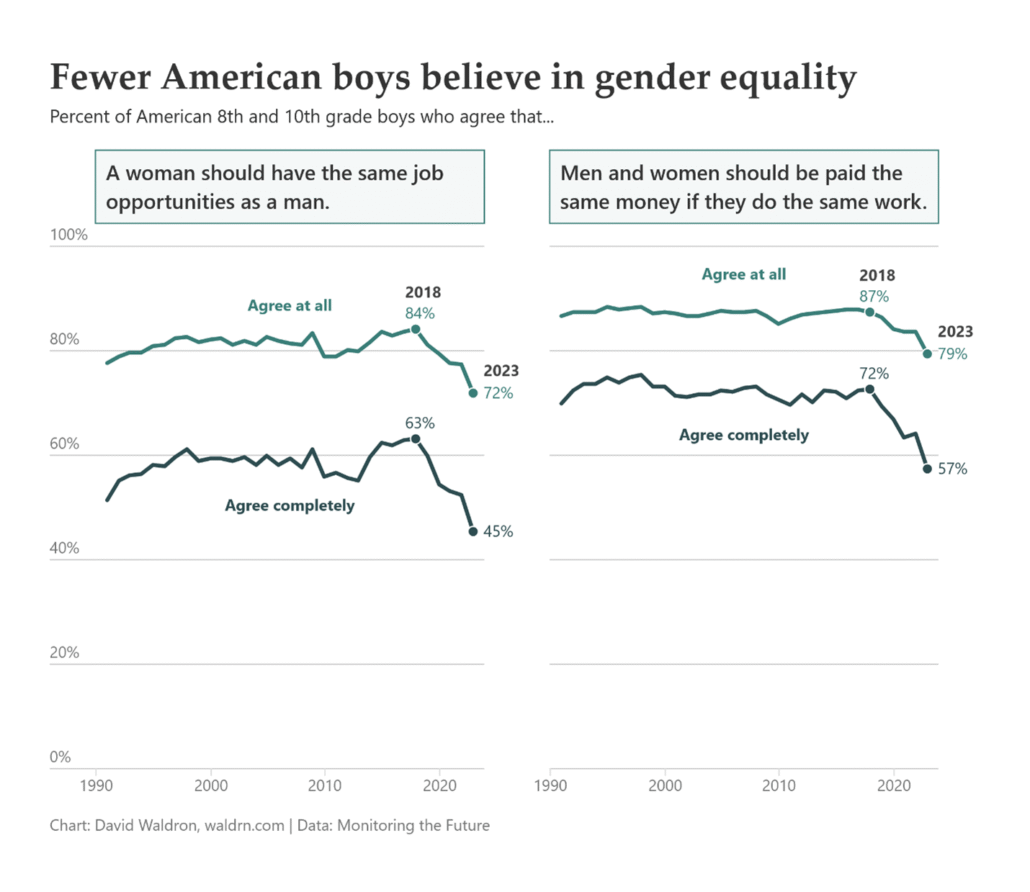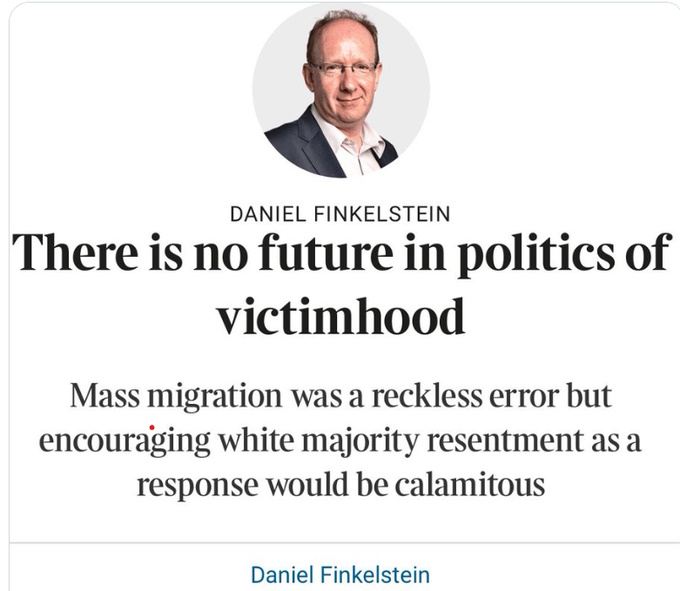My cousin David, who lived on Shadow Mountain Drive, had thrust a thick paperback into my hand as I was getting into the Nash for the trip back to my grandmother’s house in town. I could not have foreseen how far that seemingly insignificant gift would take me. I got back and got settled and took the book with me to the front porch, where I sat on a metal rocker and started to read what turned out to be Frank Herbert’s science fiction classic Dune.[1] I was interrupted by the roar of aircraft from Davis-Monthan Air Force Base. I dropped the book and ran out onto the lush Dichondra lawn holding my hands over my eyes to shield them from Tucson’s blinding sun and quickly spotted a formation of jet fighters high overhead. I knew from the televised news; Israel was at war with Egypt, Jordan, and Syria.
The United States Air Force was on alert.
I tracked the jets across the sky until they disappeared over the Santa Catalina mountains north of the city. Then I made my way back to the rocker, turned over the thick paperback, and plunged into Herbert’s epic tale of the religious bonds that develop between an ambitious royal family and the reclusive warrior people they encounter on a desert planet far in the future and light years away. The periodic roar of scrambling jet fighters soon receded into the background.
Frank Herbert’s novel Dune was my introduction to the ecological processes governing population dynamics and religion. In 1980, motivated by my early exposure to ecology in Dune, I read one of Paul Colinvaux’s books, The Fates of Nations, A Biological Theory of History.[2] Colinvaux’s elucidation of niche theory would forever influence my understanding of the behavior and motivation of human groups. Professor Colinvaux validated the basic ecological perspective I had acquired from Frank Herbert’s science fiction classic Dune in 1967 but unlike the consummately creative but self-taught Frank Herbert, Paul Colinvaux was an accomplished academic. He did not write science fiction and could not be assailed for his lack of scholarly credentials. Paul Colinvaux was an ecologist who had written several best-selling books including a basic college textbook on ecology. Working with an engineer he had designed equipment to take core samples of lake sediment in the attempt to learn what the world’s climate was like “at the end of the last glacial maximum (20,000 years before present).”[3] With one hand on his field’s theorizing and the other on its technology Professor Paul Colinvaux was a scientist’s scientist. In the Fates of Nations, a Biological Theory of History he devotes a chapter to ‘Human Lemmings: The Army that Genghis Led,’ which was my introduction to the demographic cycle of the Central Asian steppe.
There are two primary narrative threads regarding reproduction in the book of Genesis in the Torah: the Numbers thread of quantity birthing and the Wisdom thread of quality birthing.[4] The Numbers thread begins when God tells Abram, “I will make your descendants as countless as the dust of the earth; if anyone could count the dust of the earth; then he could count your descendants.”[5]
You cannot fully appreciate the nature and import of God’s pronatalist covenant with Abraham until you have read Paul Colinvaux’s description of the demographic cycle of Central Asia.
The Numbers Thread of Genesis
The description below of the demographic cycle of the Central Asian steppe is gleaned from the pages of Paul Colinvaux’s The Fates of Nations, a Biological Theory of History followed by corroborating remarks on pastoral nomadism from another seminal work, The History and Geography of Human Genes.
The vast Central Asian steppe is composed of grasslands, savannah, and shrub land stretching from central Europe to Siberia connecting Europe, the Middle East, Central Asia, South Asia, and China. Much of the steppe is unsuitable for agriculture but well suited for non-sedentary pastoral nomads. The wealth of a pastoralist is based on the size of the flocks and herds of animals he drives to pasture and the number of necessary men he must sire to manage the rapidly reproducing animals in his flocks and herds. The more animals he has, the more men he needs to drive them before him and protect them from predators and other groups of pastoralists.
Consanguineous pastoral groups, surrounded by other rapidly growing pastoral groups are ecologically driven by the high total fertility rates of their flocks and herds coupled with the lure of wealth in livestock — to adopt pronatalism.[6]
As the population of livestock and pronatal pastoralists on the steppe grows, competition over increasingly scarce resources intensifies, and pastoral groups begin to violate the living space of neighboring pastoral groups. What are at first infrequent skirmishes become regular pitched battles. The effect of growing numbers of people ripples across the entire vast open steppe where there are no natural defenses and nowhere to hide from encroaching neighbors. Pastoral groups come under increasing pressure to acquire and develop new tools and tactics to avoid dispossession and extermination at the hands of neighboring pastoral groups. Over time, some groups become large and powerful enough to subdue and subsume their neighbors. When a military genius like Genghis Khan achieves centralized authority over the consolidating nomad armies; they abandon the steppe where topography allows and invade the richer agricultural regions to the southwest and southeast. Civilizations bordering the steppe risk annihilation and repopulation by steppe pastoralists, all due to the pressure of increasing numbers of livestock and pastoralists migrating off the steppe.[7]
Their migratory cycle consists of repeated escalating “fission or fight” events between and among neighboring groups.
Two such “fission or fight” events are specifically described in the book of Genesis:
- The land could not support them both together; for their livestock were so numerous that they could not settle in the same district and there were quarrels between Abram’s herdsmen and Lot’s. Abram said, “Let there be no quarrel between us… let us part company.” [8]
- Esau took his wives and sons and daughters and everyone in his household, his herds, his cattle, and all the chattels he had acquired in Canaan, and went to the district of Seir out of the way of his brother Jacob, because they had so much stock that they could not live together; the land where they were staying could not support them because of their herds. [9]
The fission or fight cycle of relentless population pressure and subsequent population dispersal of pastoral nomads off the Central Asian steppe (strikingly described in our two examples from the biblical book of Genesis) can be tracked through the centuries. Among them, the Hyksos, an Asiatic people, arrive in Egypt’s Eastern delta around 3,600 years ago. The Srubnaya and Andronovo cultures burst out of the steppe into Eastern Europe 2,600 years ago. Another cluster of descendants of the Andronovo culture, the Sarmatians, reach Eastern Europe 2,100 years ago. The Huns (Xiongnu), a confederation of tribes, dominate the Asian steppes from 300 B.C. to 500 A.D. (1,500 years ago) from Manchuria to the Pamir mountains. They attack Europe to the west and make incursions into China becoming the main stimulus for the construction of the Great Wall of China by the Qin dynasty at the end of the 3rd century B.C. After the Huns come the Magyars (1,000 years ago) and then the Mongols (600 years ago).
At the end of his discussion of the demographic cycle of Central Asia, Professor Colinvaux writes:
“Fifty years ago, when environmental studies were in their infancy, it seemed to a number of historians and anthropologists that some simple natural rhythm might lie behind the rhythm of the nomad armies, and they sought their answer in cycles of climates… This hypothesis sounds naive to modern ecologists, who have long ago given up trying to explain population rhythms in animals as functions of simple climatic cycles, and it is now totally discredited.”[10]
The demographic cycle of Central Asia began when men domesticated livestock and were able to occupy the formerly uninhabitable wide-open steppe. The steppe’s fission or fight cycle was then generated for thousands of years by ecological stressors asserted by rapidly reproducing flocks and herds of livestock and the reactively prolific pastoral nomads who drove them to pasture. The cycle continued until the “invention of firearms, tanks and the Union of Soviet Socialist Republics ended the cycle of nomad aggressions [on the steppe] forever.”[11] Paul Colinvaux’s demographic cycle of the vast expanse of Central Asia upon which the Abrahamic covenant of Genesis appears to have been modeled[12] was the greatest cycle of migration and conquest in the history of the world.[13]
The bloodlines of pronatal pastoralists are poised to survive the persistent conflict due to their rapidly increasing numbers and their skill at displacing less prolific neighbors.[14]
On the steppe, pronatal communities measure their wealth in rapidly growing flocks and herds (and the many sons necessary to manage them). They must either withdraw from their encroaching neighbors or fight them for access to available pasture.
Off the steppe in Diaspora, rapidly growing Orthodox Jewish communities bound by the pronatal dictates of the Abrahamic covenant of Genesis, measure their wealth in the broad niche spaces and rich resources they can potentially obtain from their colonized indigenous populations.
The Wisdom Thread of Genesis
Pastoral Genesis contains the establishment archetype for a successful Diaspora, but a successful Diaspora requires more than the many colonizers the Abrahamic covenant provides. The biblical author was aware of this tactical defect and bolstered Abraham’s pronatalism by adding a second thread to the patriarchal narrative to give Diaspora colonizers a decisive advantage over a colonized host nation’s indigenous population. The decisive advantage the biblical author provides is allegorized in Jacob’s preference for the younger cunning Rachel rather than her older sister, the literally “dull-eyed Leah” in Genesis chapters 25-29.[15]
After the Biblical fall of Adam and Eve and their acquisition of the Knowledge of Good and Evil, countless behavioral alternatives became available to them. As creatures of acquired behavior, Adam and Eve and their descendants could only hope to avoid the wrong choices by learning as much as they could and continuing to learn for as long as they lived. Under relentless selection pressures in the struggle for survival, disciplines developed that bound groups of men to common practical traditions. Families that acquired significant knowledge and passed that knowledge down to their sons tended to survive and prosper. Families that failed to acquire and instill in their sons the knowledge of what were fast becoming “adaptive disciplines” did not.
The Biblical patriarchs were shepherds who survived by domesticating and breeding their animals. They learned to manipulate the reproductive differences in their flocks from generation to generation. They weren’t aware of the underlying genetic processes. They simply observed the differences wrought by their choices, as all pastoralists learn to do. They passed down their wisdom from father to son. When writing developed, the oral traditions were inscribed on tablets and written on scrolls.
In Chapter 1 of The Origin of Species, titled ‘Variation under Domestication’ under the heading ‘Principles of Selection Anciently Followed and Their Effects,’ Charles Darwin makes the following remark:
“From passages in Genesis, it is clear that the colour of domestic animals was at that early period attended to.”[16]
Darwin does not give chapter and verse for the passages in Genesis he mentions, but once the great naturalist and lapsed seminarian brought them to my attention, I had to find them. It made no sense for the Biblical author to have established a Darwinian perspective in Genesis only to abandon it immediately and completely. I had hoped to find continuing strands of Genesis’ allegorical thread, using that same Darwinian perspective, as it weaved its way through the Bible. Now, in the Origin of Species, Charles Darwin himself was telling me that the principles of selection were anciently followed in Genesis. It took me no time at all to find those principles applied throughout the story of Jacob and Esau, beginning in Genesis twenty-five.
The Lord said to Rebecca, the mother to be of Jacob and Esau:
“Two nations in your womb. Two peoples going their own ways from birth! One shall be stronger than the other; the older shall be servant to the younger.”[17]
There are twins in Rebecca’s womb. When the time comes, the first-born is Esau and the second born Jacob. Jacob is born with his hand grasping Esau’s heel. Esau grows up to be a hunter, a man of the plains while Jacob grows into a settled life among the tents. One day Esau arrives home from the hunt famished. When he asks Jacob for some broth, Jacob asks for Esau’s birthright in return. Esau carelessly agrees, offering his birthright for the broth.
What is the significance of birthright?
What has Esau bartered for broth?
With the birthright the oldest son inherits his father’s authority and assumes leadership of the family. He becomes the next generation’s patriarch with a special place.
“He is a central figure – leader, priest, bearer of the religious experiences of his clan, guardian of its traditions, and invested with the power to bless and curse as a means of preserving acceptable social behavior.”[18]
In one careless exchange Esau has given up his patriarchal authority to his brother Jacob who has treacherously initiated a negotiation that eventually grants him a birthright not rightfully his. Later, Esau makes a second wrong choice. He brings bitter grief to his parents when he abandons endogamy and marries a Hittite woman.
Years later, Isaac, the father of Jacob and Esau, near death, calls for his first-born Esau to proffer his blessing, but Rebecca and Jacob deceive him by arranging for Jacob to take Esau’s place so that it is Jacob who receives the blessing from Isaac. Esau is angry to learn he has been deceived a second time. Rebecca arranges for Jacob to leave for Haran to find a wife among the daughters of his Uncle Laban because she cannot bear for one of her sons to marry another Canaanite woman and because she fears Esau’s anger toward Jacob.
Esau’s careless attitude toward his own birthright certainly suggests a lack of cunning and intelligence. When Esau asks his father for his blessing, Isaac refuses to take back the blessing he has already given to Jacob even though Isaac is aware of Jacob’s deception. Isaac’s blessing stands, and Jacob receives Esau’s birthright. The elder serves the younger, as God predicted.
On the way to Haran to procure a wife, Jacob has a dream. In the dream God makes promises to Jacob and Jacob responds by promising that if God protects him, Jacob will tithe to God. He erects a sacred pillar as a sign of their covenant. Jacob reaches Haran and agrees to work seven years for Laban’s younger daughter Rachel but when the time comes Laban insists that according to tradition the older “dull-eyed” Leah must be married before the younger daughter (the elder before the younger). Laban’s treachery forces Jacob to work seven more years for the younger, more vivacious Rachel. While working for Laban and caring for his flocks, Jacob and Laban argue over Jacob’s wages. Both men attempt to negotiate exchanges to their own advantage as Laban had negotiated the marriages of his daughters to his own advantage.
We have determined from the story of Adam and Eve that their fall from grace was an allegory for the evolutionary transition from the instinct of animals to the learned behaviors of men.[19] From that we deduced that to return from the Fall a man must learn as much as he can for as long as he lives until what he has learned becomes instinctive and he can stand in the presence of God without fear. In the story of Jacob and Esau the birthright does go to the most cunning and intelligent, the one “closest to God,” just as God predicted in an appearance to Rebecca who participates in her son Jacob’s treachery. Having won the birthright, Jacob dutifully obeys his mother and goes to Haran to find a wife among her relatives. Laban cunningly substitutes the dull-eyed older daughter Leah for Jacob’s first choice, the younger and more vivacious Rachel. The substitution reintroduces the theme of the elder and the younger.
The elder Leah is dull-eyed, as the elder Esau was careless.
But in this instance, as Rebecca had schemed to have the smarter younger Jacob obtain the birthright, Laban arranges to have the older, duller Leah marry Jacob. It is the same switch in reverse. If Leah is truly dull-eyed, and the principles of selection were at that early period attended to as Darwin and Genesis tell us, then Jacob expects the offspring of Leah to inherit the dull-eyes of their mother while retaining the birthright. He also knows that Rachel’s sons, though gifted with their mother’s vigor and more suited for leadership, are destined to follow. It would at first appear that the less intelligent accrue the advantages while the more intelligent are denied, which is just the opposite of what had transpired between Jacob and Esau. Jacob works the seven extra years for Rachel, but he is incensed by Laban’s continuing treachery and decides to wreak his vengeance on Laban. It is here that we find Darwin’s reference to Jacob’s “attending” to the color of his domesticated animals.
“As for the rams, Jacob divided them, and let the ewes run only with such of the rams in Laban’s flock as were striped and black, and thus he bred separate flocks for himself.”[20]
Genesis concludes by saying:
“Thus, the weaker came to be Laban’s and the stronger Jacob’s.”[21]
The Darwinian reading of the allegory is uncomplicated. We are simply told that Jacob deliberately weakens Laban’s flocks. He breeds only the less vigorous animals in Laban’s flocks while breeding the most vigorous animals in his own. This is the core of the allegory. We shall see as the story unfolds that this is precisely what Jacob must believe Laban has done to him. By forcing Jacob to marry a dull-eyed wife first, Laban has weakened Jacob’s human flock. The son of a dull-eyed woman will procure the birthright and title of patriarch and will rule over Jacob’s next generation.
As the passage in Genesis explicitly states, Jacob selects for desired traits in his flocks. It would be highly unusual for a pastoralist not to know that intelligence is a selectable trait passed down from parents to their offspring. Jacob had wanted Rachel as his first wife for her vigor rather than the literally “dull eyed” Leah, but if God prefers those who are most intelligent, why would God allow a weakening of Jacob’s human family to stand? God made a covenant with Jacob. If our Darwinian reading is correct, that man returns from the Fall of Adam and Eve by embracing learned behavior and making it intuitive, then intelligence must always prevail in the Bible. The return to intuitive decision-making is the return to God. God must keep his covenant. While pondering the seeming contradiction, a simple solution arose. The Darwinian truth of the matter would be borne out in the progeny of Leah and Rachel. I went back to Genesis to find out what had happened to their children.
This is what I found.
Reuben, the first-born of the dull-eyed Leah, defiles his father’s concubine. His father says he will not excel. Simeon and Levi, the next two sons of Leah, have spades that become weapons of violence. Their father curses them. Judah, next son of Leah, sells Joseph, Rachel’s first born, into slavery and marries a Canaanite woman breaking the tradition of strict endogamy established by Abraham when he sent his servant Eliezer back to Haran to find a wife for his son Isaac among his own endogamous family, a tradition maintained by Judah’s father Jacob.
Leah’s sons have made some very wrong choices.
The son of vivacious Rachel (Jacob’s second wife but the true intended mother of Jacob’s first born) is Joseph, who should rightfully have carried the birthright in God’s eyes and Jacob’s eyes. Although sold into slavery by his own brother, Joseph rises to become counselor to the pharaoh. Joseph, who had been cheated of the birthright by the machinations of Laban, becomes a prince among his brothers and his brothers become subject to him and, once again, the elders serve the younger.
Nearing his deathbed, Jacob summons Joseph’s sons and says to Joseph, “Now, your two sons…shall be counted as my sons; Ephraim and Manasseh shall be mine as Reuben and Simeon are.” Jacob, now called Israel, then goes on saying of Manasseh, Joseph’s first born, that Ephraim, “…his younger brother shall be greater than he” and now, even of Joseph’s sons, the elder serves the younger.
Laban’s wrong has been righted. The sons and now the grandsons of the vivacious Rachel have become equal to the firstborn of the dull-eyed Leah. The reversal is complete. God’s Law is immutable. The allegory of the elder serving the younger is three generations deep. Intelligence is passed down from generation to generation and intelligence prevails over birthright.
Adam and Eve fell from God’s grace when they ate the fruit from the Tree of the
Knowledge of Good and Evil. They broke the bonds of instinct and would now rely on learned behavior. They would learn the wrong things and make the wrong choices. Their only recourse was to learn as much as they could for as long as they lived.
In the story of Jacob and Esau, a continuing strand in the allegorical thread begun with Adam and Eve, we find that God does indeed favor the learned. Isaac, father of Jacob and Esau, is cunning. Jacob is cunning. His mother Rebecca is cunning. Her father Laban is cunning. Rachel, the woman Jacob prefers as mother of his first-born, is cunning and when the learned are denied their birthright superior breeding prevails, and Jacob eventually elevates even Joseph’s sons over dull-eyed Leah’s unfortunate progeny.
Darwin pointed to the science in the religion when he told us he knew what Jacob had done to Laban’s flocks. Human families, like a shepherd’s flocks, can be bred for specific traits. The most important selectable human trait is intelligence and as we clearly see in the very beginning of the Bible -– God favors the learned.
“Abraham” and “Jacob” work in concert to establish a Diaspora. Jacob’s preference for cunning Rachel rather than “dull-eyed Leah” ensures his offspring will not be an ordinary horde of colonizers easily assimilated into a host nation’s teeming masses, but a large cognitively superior force equipped to seize the broadest niches from a colonized host nation’s educated classes.
- Abraham provides the large force of colonizers.
- Jacob provides the colonizers with the intelligence to seize the hosts’ broadest niches, extending the most control over the colonized host’s indigenous population.
Cavalli-Sforza, Paolo Menozzi and Alberto Piazza in The History and Geography of Human Genes cite “rapid population growth” first in a list of pastoralism’s advantages over sedentary societies. The balance of their list of pastoral attributes consists of traits indicating superior intelligence:
…The potential for rapid population growth following the increase of herds, the advantage of life in the open with frequent change of environment… the ability to move rapidly and form large bands of well-trained warriors… and the development of very effective weapons and tactics. [22]
The authors conclude that:
…All these preadaptations have made it likely that strong groups of pastoral nomads could move to invade and control rich agricultural regions even though they were, in terms of relative numbers, small minorities.[23]
The preadaptations[24] of steppe pastoralists introduced in The Fates of Nations, a Biological Theory of History and The History and Geography of Human Genes are strikingly similar to the roles and behaviors of the leading men in Genesis’ patriarchal narratives, who are:
- Pronatal pastoralists (driven by pastoralism’s “fight or flight” cycle)
and
- Eugenicists (by virtue of Jacob’s favoring Rachel over “dull-eyed” Leah and breeding his own separate flocks stronger while breeding his crafty Uncle Laban’s flocks weaker).[25]
These preadaptations of steppe pastoralists on the Central Asian steppe are the same adaptive behaviors asserted by today’s segregated Orthodox Jewish communities religiously observing the Levitical prohibitions[26] within a colonized host nation.[27]
| Abraham |
Have as many children as you can
|
Maximum
Reproductive
Potential |
| Jacob |
Marry well among your own
|
Maximum
Genotypic
Potential |
The Segregated Communities and their Artificial “Steppe”
The religious discipline asserted by segregated Orthodox Jewish communities sojourning in a host nation replicates the environmental stressors borne by the pastoralist communities of the Central Asian steppe — when they were on the steppe, immediately subject to the steppe environment’s selection stressors, and surrounded by competing communities.[28]
In the Middle Ages, the ever-growing Diaspora’s endogamous network was protected from the centrifugal effect of the pronatal fission or fight cycle by Jewish matchmakers or “shadkhan”[29]
[Who] traveled from city to city in an intricate network of cross pollination, telling the father of a young man that a perfectly suited young lady had been discovered two hundred miles away… Jewish law recognized this aspect of the shadkhan’s function and stipulated that he was to be paid a higher fee when the bride and groom [came] from widely separated communities. In this way he literally interrelated whole communities and provinces.[30]
…From the days of the Talmud and for centuries thereafter, it was the headmasters of the Higher Torah Academies who were customarily asked to recommend eligible students for marriage. The reason is obvious. In addition to possessing the necessary moral qualifications, these rabbis were also intimately acquainted both with the elite young scholars who were considered the prize grooms and the leading families of the community who supported the communal institutions.[31]
Each Orthodox Jewish community in Diaspora applies its religious discipline:
- to endogamy and the observance of the Levitical prohibitions,[32] (the behavioral guarantors of the Abrahamic covenant)
and
- to selection for intelligence in the unions of their offspring, (the behavioral guarantor of the Jacobian covenant).
Each community’s attention to religious discipline:
- bolsters its cohesion
- increases its genetic potential
- raises its total fertility rate
- and decreases its incidence of sexually transmitted diseases.[33]
A Rapidly Rising Total Fertility Rate and Social Unrest
Due to my interest in demographic issues, I received the following text in an email from a community group in upstate New York on April 16th, 2015.
Thursday night, at 7 pm, the County has invited us to attend a meeting at Central Valley Elementary School about the massive annexation effort put forth by Kiryas Joel… the 507-acre annexation which would almost double Kiryas Joel in size and population. Some of you may have listened to the podcast called “Stand Up Hudson Valley” on Blogtalkradio.com where John Allegro and I discussed the latest news regarding Kiryas Joel’s expansion efforts. Kiryas Joel, according to their very own newspaper called “Hakiryah” stated that they will be filing for a NEW annexation of hundreds of acres of Woodbury land very soon. So, you see, your greatest asset, your home, is in jeopardy of losing its value very rapidly.
There’s something we can do about this. But only if we all act. Annexation for the purpose of changing zoning is not legal. Annexations which are NOT in the overall public interest are also not legal.
The Orthodox Jewish community of Kiryas Joel in upstate New York is compelled by its high total fertility rate to make a public request for more land to accommodate its burgeoning and entirely segregated population. Functionally, there is no difference at all between an illegal settlement in Palestine, or an illegal settlement in Orange County, New York. Such Orthodox Jewish settlements, due to religious discipline devoted to pronatalism and eugenics, (analogous to competing pastoral groups on the Central Asian steppe driving the “fight or flight” cycle), grow exponentially and soon threaten their closest neighbors. Population growth may seem inconsequential when imagined to be an overcrowded nursery of helpless infants, but demographic turf wars initiated at the community level eventually rise to the level of civil war and revolution as broad lucrative niches are appropriated at the state, national and continental levels by those formerly helpless infants upon maturity.[34] In The Fates of Nations… the ecologist Paul Colinvaux wrote:
I suggest it is axiomatic of human history that social upheavals, even revolution, do not emerge from the ranks of the poor, for all the claims of Marxists that they do. They come from disaffected individuals of the middle classes, the people who experience real ecological crowding and who must compete for the right to live better than the mass.[35]
In the wake of the French revolution, indigenous Europeans assumed that with the emancipation and repartition of Judaism at the French Constituent Assembly on September 27th, 1791, most Jews would abandon their segregated orthodoxy and assimilate into the cultures of their host nations becoming subject to a falling total fertility rate like any other indigenous educated class. It caused a scandal among the European elite when the assumption turned out to be wrong. Though many Jews did leave the orthodox communities, the orthodox communities remained: segregated, endogamous, and pronatalist. In addition, non-Orthodox Jews in Diaspora, religiously bred for intelligence, continued to emulate the endogamy of the Orthodox Jewish communities from which they had emerged, intermarrying primarily among themselves, albeit to a lesser degree than their orthodox brethren, while participating in Western culture to some degree, or not, a choice they could now freely make while also directly competing socioeconomically with the indigenous educated classes among whom they had come to live.[36]
Due to the ecological stressors of Abrahamic pronatalism and Jacobian eugenics, and despite what they want or don’t want, know or don’t know, orthodox and non-Orthodox Jews eventually find themselves compelled, under the persistent ecological pressure of their rising numbers and inherited superior cognitive ability, to appropriate the broad niches of the educated classes of their hosts’ indigenous populations. This is akin to the “real ecological crowding” of the embattled middle classes Paul Colinvaux describes as the catalyst for “social upheaval and revolution.”
Asserting their biblical and historic fidelity to the maintenance of Jewish identity, and under the mandate of their God who promises them exclusive dominion over the inhabited lands they colonize, non-Orthodox Jewish communities maintain their endogamy and their pronatalism wresting control over their host nations’ indigenous populations as did the archetypal Joseph and his family in the Egypt of Genesis.[37] The rapidly increasing numbers of the orthodox at the religious core and the caustic intellectual influence of the non-orthodox on the secular periphery, launch an ecological and ideological assault on the populations and cultures of their hosts resulting in what has come to be known as the anti-Semitic cycle. Colinvaux writes:
…Niche theory predicts: that middle and upper classes will be the first to feel the pressures of crowding… Niche theory predicts… that a limit will be reached to the number of broader niches that can be found by ingenuity, trade and theft… [niche] theory predicts that the numbers desiring broad niches will continue to increase… it is this phenomenon which is likely to be the cause of decay. Social unrest is now inevitable.[38]
The Biblical author culminates Genesis’ Darwinian threads regarding pronatalism (too many) and eugenics (too strong) in the first few lines of the book of Exodus:
“Now the Israelites were fruitful and prolific; they increased in numbers and became very powerful, so that the country was overrun by them. Then a new pharaoh ascended the throne of Egypt, one who knew nothing of Joseph. He said to his people, “These Israelites have become too many and too strong for us…”[39]
The Pharaoh’s remark at Exodus 1:7-10 identifies the first complete and significant instance of the “anti-Semitic” cycle:
- the Abrahamic covenant that generates the cycle (too many)
and
- the Jacobian selection for intelligence that directs the cycle (too strong).
You shall be blameless before the Lord your God, for these nations,
which you are about to dispossess, listen to fortune-tellers, and to diviners.
But as for you, the Lord your God has not allowed you to do this.[40]
The Power and the Plight of Orthodox Jewish Women
Orthodox Jewish women bear the brunt of the pressure for maintaining the Abrahamic cycle of continuous childbirth. Below are the words of an Orthodox Jewish female apostate who cannot bear the religious discipline of pronatalism any longer:
Gitty would reach her late teens before she realized she was living in perhaps the most religiously conservative community in America. “In my parents’ house, there’s no TV, no radio, no newspapers not in Yiddish, no Internet,” Gitty says.
Gitty knew “I couldn’t live in Kiryas Joel anymore, that I didn’t want to be one of those women who pop out babies every eighteen months and think whatever their husbands tell them to…”[41]
The patriarchal pressure on Gitty and other Orthodox Jewish women to reproduce is diametrically opposed to the non-reproductive LGBT sexual ideology propagandized for Western consumption in the media and taught to our children by “progressive” teachers in our public schools.
Gitty and her peers, isolated from the broadcast media, are not propagandized to entertain their sexual proclivities as Western women and children are. Gitty and her peers are taught to do their duty. Have a baby every eighteen months.
Decreasing Patriarchal Pressure on Orthodox Jewish Women
If patriarchal Orthodox Jewish communities in Diaspora lengthened their reproductive cycle by decreasing their demands on Orthodox Jewish women for continuous childbirth,[42] the competition for indigenous niches between Diaspora colonizers and a host’s indigenous educated classes would ease and the anti-Semitic cycle would abate. If Orthodox Jewish communities lengthened their reproductive cycle to match their total fertility rate to the total fertility rate of the host nations they colonized (and the indigenous host populations also practiced Jacobian selection for intelligence), the reactive anti-Semitism generated by the cycle might soon be indistinguishable from the internal resource competition of the colonized host populations themselves and, for all practical purposes, the vicious cycle resulting in widespread social conflict: expulsions, pogroms, and holocausts for Jews and Gentiles alike would, most certainly, end.
My informed speculation based on the simple logic of the Biblical texts would, of course, have to be followed by verification conducted by Jewish and non-Jewish scientific communities alike coupled with serious international negotiations over pronatalism, assortative mating with selection for intelligence, migration, and Diaspora colonization.
[1] Frank Herbert, Dune (Chilton, New York 1965) thrust into my hand by David Williams of Tucson, Arizona
[2] Paul Colinvaux, The Fates of Nations, a Biological Theory of History (Simon & Schuster) 1980
[3] Paul Colinvaux died on February 28, 2016
From his obituary http://www.legacy.com/obituaries/Dispatch/obituary.aspx?pid=179279106
[4] Richard Faussette, ‘The Biblical Significance of the Darwinian Threads in Genesis and their Link to the First
Instance of the anti-Semitic Cycle in Exodus’, ‘The Book of Genesis from a Darwinian Perspective’ and ‘The
Fundamental Structure and Systematic Theology of the Torah’
www.academia.edu/
[5] Genesis 13:16
[6] Cowboys are hired hands who drive livestock to market. They are not consanguineous pastoralists and
do not generate a demographic cycle.
[7] As the steppe’s population grows and its men are subjected to greater militarization, a man’s commitment
to his group’s coordinated behaviors are repeatedly pushed toward total personal commitment. The total
personal commitment to collective behavior made its way into the ancient Vedic texts as the discipline of self-
sacrifice: the core of Eurasian religion from Zen Buddhism to Christianity. See Richard Faussette, ‘The Core
of All Eurasian Religion – In a Nutshell – for Ambitious Disciples’
www.academia.edu
[8] Genesis 13:6-9
[9] Genesis 36:6-7
[10] Paul Colinvaux, The Fates of Nations, A Biological Theory of History, (Simon & Schuster, NY, 1980) p. 188
[11] The Fates of Nations…, page 210
[12] See Richard Faussette, ‘The Book of Genesis from a Darwinian Perspective’
www.academia.edu/
[13] The Union of Soviet Socialist Republics established borders on the Central Asian steppe in the 20th century ending
the periodic invasions wrought by Central Asia’s demographic cycle. /rf
[14] See Richard Faussette, ‘The Subordination of Eve in Genesis’
www.academia.edu/
[15] See Richard Faussette, ‘The Biblical Significance of Adam and Eve and Jacob and Esau’
www.academia.edu/
[16] The Origin of Species, Charles Darwin, New American Library, 1958, p.50
[17] Genesis 25:23
[18] Mysticism, Its Mystery and Challenge, Bruno Borchert, Samuel Weiser, Inc. 1994, p. 107
[19] See Richard Faussette, ‘The Biblical Significance of Adam and Eve and Jacob and Esau’
www.academia.edu/
[20] Genesis 30:40
[21] Genesis 30:42
[22] Cavalli-Sforza, Paolo Menozzi and Alberto Piazza, The History and Geography of Human Genes, (Princeton
University Press, Princeton New Jersey 1994) page 200
[23] Ibid., page 200
[24] Preadaptation refers to a trait, such as a structure or behavioral pattern, that initially evolved as an adaptation for
one function but later enabled the evolution of another function.
[25] For why Jacob favored Rachel over Leah, see Richard Faussette, ‘The Book of Genesis from a Darwinian
Perspective,’ and ‘The Biblical Significance of Adam and Eve and Jacob and Esau,’
www.academia.edu/
[26] The Levitical prohibitions at Leviticus 18:19-23, raise the total fertility rate of observing communities.
They serve as the behavioral guarantors of the Abrahamic covenant.
[27] “But the Israelites were fruitful and prolific. They became so numerous and strong that the land was filled with
them.” (Exodus 1:7)
[28] Melchizedek, the pastoral archetype of Genesis “rules in the midst of his enemies.” Psalm 110:2-4
[29] Shadkan are matchmakers. They strive to match Judaism’s smartest sons to its smartest daughters.
[30] Maurice Lamm, The Jewish Way in Love and Marriage (San Francisco, Harper & Row, 1980) p. 6
[31] Ibid., p. 5.
[32] Leviticus 18:19-23
[33] See Richard Faussette, ‘The Biblical and Political Significance of the Levitical Prohibitions’
www.academia.edu/
[34] Consider the conflict between rapidly growing orthodox communities, such as Kiryas Joel, and their host’s
communities, to gain an understanding of the negative consequences of a high total fertility rate (achieved by
religious observance of the Levitical prohibitions).
[35] Paul Colinvaux, The Fates of Nations…, pages 76-77
[36] The emancipation and repartition of Judaism in 1791 transformed Jews from a “priestly nation” as they are
described in the Bible and had been structured since antiquity to a full-fledged nation of “priest” and “warrior”
classes increasing their social mobility and enabling them to freely compete with, and appropriate niche space
from, their colonized indigenous populations.
See Richard Faussette, Race and Religion: A Catholic View in Race and the American Prospect edited by
Samuel T. Francis, Occidental Quarterly Press, 2006
[37] See Richard Faussette, ‘The Book of Genesis from a Darwinian Perspective,’
www.academia.edu/
[38] Paul Colinvaux, The Fates of Nations…, page 93
[39] Exodus 1:7-10
[40] Deuteronomy 18:13-14
[41] Escape from the Holy Shtetl, Mark Jacobson, July 13, 2008
http://nymag.com/news/features/48532/
[42] They can lengthen their reproductive cycle by decreasing patriarchal pressure on their women for continuous
childbirth allowing them to have a baby every thirty-six months rather than the eighteen months now expected of
them. See note 41
Richard Faussette copyright © July 2020 All Rights Reserved, word count 6,489
Updated March 27, 2025, April 17, 2025, May 22, 2025, August 14, 2025





 Historical, humorous, horrific:
Historical, humorous, horrific:  Daniel Finkelstein, high in the hostile elite, tells British goyim not to be angry about non-White invaders
Daniel Finkelstein, high in the hostile elite, tells British goyim not to be angry about non-White invaders The elite sneers arrogantly and unfunnily at working-class Whites who support the Deep-State project known as the Reform Party
The elite sneers arrogantly and unfunnily at working-class Whites who support the Deep-State project known as the Reform Party


